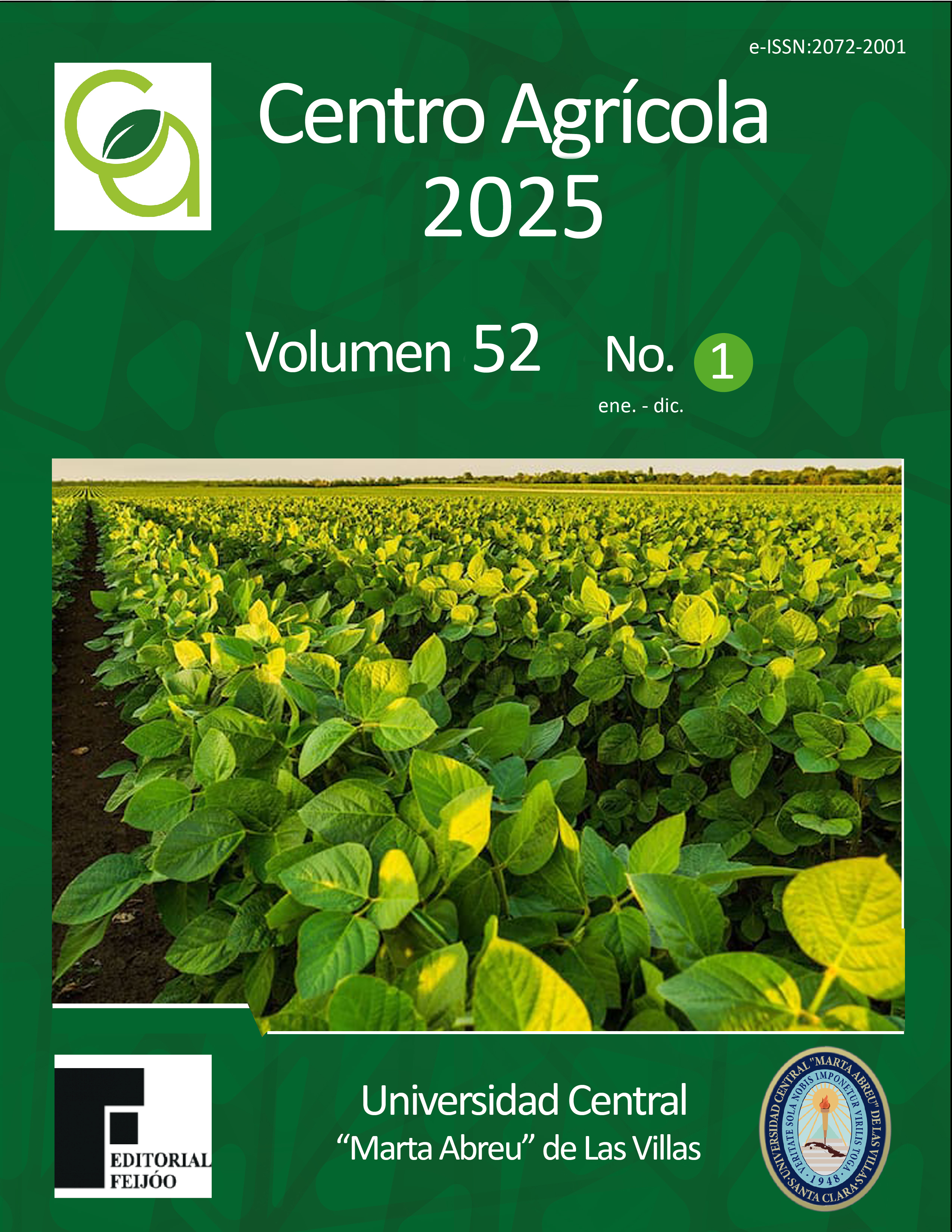CF: cag211232409
ARTÍCULO DE INVESTIGACIÓN
Potencial de bacterias asociadas a plantas de sorgo (Sorghum bicolor (L.) Moench.) para estimular el crecimiento vegetal
Potential of associated bacteria to sorghum plants (Sorghum bicolor (L.) Moench) to stimulate plant growth
Yoania Ríos Rocafull*
Beatriz Ramos García
Marisol Morales Díaz
Janet Rodríguez Sánchez
Bernardo Leonardo Dibut Álvarez
Marisel Ortega García
Instituto de Investigaciones Fundamentales en Agricultura Tropical “Alejandro de Humboldt”. Calle 188 #38754 e/ 397 y Linderos, Santiago de las Vegas, Boyeros 17200, La Habana, Cuba
RESUMEN
Contexto: El sorgo (Sorghum bicolor (L.) Moench) es un cultivo multipropósito utilizado como alimento humano, animal y biocombustible. Para aumentar sus rendimientos se podría potenciar su asociación con bacterias promotoras del crecimiento vegetal.
Objetivos: Caracterizar aislados bacterianos asociados a plantas de sorgo como estimuladores del crecimiento vegetal.
Métodos: La rizosfera y plantas del cultivar de sorgo ‘CIAP 132-R’ se procesaron por el método de diluciones seriadas. Se seleccionaron los aislados similares en su morfología y fisiología a los géneros Bacillus, Azospirillum, Azotobacter y Gluconacetobacter. Se evaluó su potencial para fijar nitrógeno atmosférico, solubilizar nutrientes, liberar enzimas líticas y se valoró su actividad frente a Fusarium chlamydosporum, Fusarium oxysporum y Curvularia lunata por el método de Cultivo Dual.
Resultados: Se purificaron desde la rizosfera y el interior de plantas de sorgo 14 microorganismos de los cuales se seleccionaron cuatro por sus características. Todos presentaron potencial para la fijación biológica de nitrógeno atmosférico, uno solubilizó fósforo y otro potasio; y las cuatro produjeron enzimas endoglucanasas, dos secretaron enzimas amilasas y las restantes proteasas. Por lo que en general todos cuentan con herramientas fisiológicas para estimular el crecimiento vegetal y degradar las paredes celulares de hongos fitopatógenos. Tres de estas cepas mostraron un efecto antagonista ante F. chlamydosporum, dos para F. oxysporum y una afectó a C. lunata.
Conclusiones: Asociados a plantas de sorgo existen bacterias con potencialidades para estimular el crecimiento vegetal, las que se podrían utilizar en la formulación de productos que contribuyan a aumentar los rendimientos del cultivo en Cuba.
ABSTRACT
Context: Sorghum (Sorghum bicolor (L.) Moench) is a multipurpose crop used for human and animal food as well as biofuel. To increase its yields, its association with plant growth-promoting bacteria could be enhanced.
Objectives: To characterize bacterial isolates associated with sorghum plants as plant growth stimulators.
Methods: The rhizosphere and plants of the sorghum cultivar ‘CIAP 132-R’ were processed using the serial dilution method. Isolates similar in morphology and physiology to the genera Bacillus, Azospirillum, Azotobacter, and Gluconacetobacter were selected. Their potential to fix atmospheric nitrogen, solubilize nutrients, and release lytic enzymes was evaluated, and their activity against Fusarium chlamydosporum, Fusarium oxysporum, and Curvularia lunata was assessed using the Dual Culture method.
Results: Fourteen microorganisms were purified from the rhizosphere and the interior of sorghum plants, of which four were selected based on their characteristics. All showed potential for biological fixation of atmospheric nitrogen; one solubilized phosphorus and another potassium; and all four produced endoglucanase enzymes; two secreted amylase enzymes, while the others produced proteases. In general, all possess physiological tools to stimulate plant growth and degrade the cell walls of plant-pathogenic fungi. Three of these strains exhibited an antagonistic effect against F. chlamydosporum, two against F. oxysporum, and one affected C. lunata.
Conclusions: Bacteria associated with sorghum plants have potential to stimulate plant growth, which could be used in formulating products that contribute to increased crop yields in Cuba.


